Lux Sit And Dance |
Seattle based Light Show that ran between 1966 and 1970 started by Don Paulson. |
Lightshows in SeattleBy Robin Oppenheimer Posted May 14th 2003 HistoryLink.org Essay 4173 - https://www.historylink.org/File/4173 |
If you can help with more information about this Light Show we would love to hear from you. |
The first lightshow in the Seattle area occurred on November 5, 1966, when KRAB radio (one of the first community-based FM radio stations in the country) held a benefit concert in Kirkland. It was this event that birthed both the Union Light Company and Lux Sit and Dance lightshows. Though short-lived, this history is rich in stories and characters, and connects Seattle to both East Coast and West Coast lightshow histories that had different roots, cultures, and aesthetics.
Lux Sit and Dance (1967-1970) Basic Members: Don Paulson, Scott Rohrer, Sharon Bealls, Rick Lotz, Russell Burton, Saulius Pempe, Richard Frahm, Tim Kyle; Contributing Members: Steve Lervold, Diane Scott, Michael LaRue, Don Pospeshil, Dan Brickbauer, Tom Joiner, Tim Hadlett, Bill, Tracy and Mary Sherhart, P. J. Doyle, Tim Nolan, David Coleman, Patra Leaming, Bryan Kollman, Penny Clay, George Comito, Mark Allen. Lux Sit and Dance was organized by Don Paulson, a visual artist and E.A.T. (Experiments in Art and Technology) Seattle chapter member, in January 1967 in Seattle. UW student Scott Rohrer suggested the name of "Lux Sit," ("Let there be light" in Latin) as it is on the University of Washington seal. The local joke at a campus dance was to say to your date, "Lux sit and dance" (let’s sit and dance). As Don Paulson writes in his unpublished personal history: “Lux Sit probably did more to acquaint the public at large than any other lightshow group, especially the so-called Establishment …. Lux Sit never considered themselves hippies although they agreed with the good that eventually came from the movement. Lux Sit members were already in the professions. Don Paulson and Andy Warhol’s Factory (1966) Don Paulson was born in Seattle. He became a Pop Art painter and moved to New York City in 1966. He was befriended by Ivan Karp (who discovered Andy Warhol and was the Director of the Leo Castelli Gallery). Karp encouraged Paulson to continue painting, and introduced him to Warhol at a Thanksgiving dinner. "The Factory was outrageous, far from the mellow hippie lightshow concerts beginning to happen on the west coast. This hard edge, eastern approach to art was the reason San Francisco hated the Velvets and Andy Warhol. “It was an event that caught everyone’s attention so everyone was there — 300 or more people crowded into the small basement theater, Gerard Melanga, Yoko Ono, Eddie Sedgwick, Billy Name, Eric Emerson, Henry Geldzahler, Mario Montez, Ondine, Taylor Mead, Nico, etc …. Andy was surrounded by people. He was quiet but with a pleased, fascinated look. ‘Isn’t this great’ he said. Warhol wrote, ‘we all knew something revolutionary was happening. We just felt it. Things couldn’t look this strange without some barrier being broken.’ ” Birth of Lux Sit and Dance Lightshow (1966-1968) Paulson returned to Seattle in March 1966 where he met people interested in light effects. He writes “Artist Steve Lerrold introduced me to Living Room Light Shows that he and his friends were doing with projectors, liquids, prisms and fog machines …. Members of the Union Light Co. and others such as Tim Harvey, Chuck Trimble and Jeff Collum were also experimenting with light and theater …. The counterculture were beginning to network in the coffeehouses and on campus. The Rock scene was gearing up and KRAB Radio was the ‘voice of the hip people.’ ” On January 14, 1967, Friends of the Free University (University of Washington students and teachers) put together a Light Show dance at the Eagles Auditorium. “About a dozen people were in the balcony doing light effects on the band and side walls, but I thought the lights were a little dull, it needed some spark. I’m not sure what I did exactly, but I projected a lot of white light with my hand over the lens and releasing it back and forth to the beat of the music. The other lights were too laid back, the show needed some energy — more New York. Sources: Walt Crowley, Rites of Passage: A Memoir of the Sixties in Seattle (Seattle: University of Washington Press,1995); undated newsclippings from The Helix, and from unknown New York City publications, in Carol Burns's archive, Seattle, Washington; Don Paulson, "Sit, Lux, and Dance Lightshow," unpublished manuscript; Tom Robbins article about lightshows, Seattle magazine, 1967, newsclipping in Don Paulson’s archive; Robin Oppenheimer interviews with Carol Burns, Paul Dorpat, Ron McComb, and Don Paulson, Seattle, Washington, 2003; E.A.T. Reunion Website. |
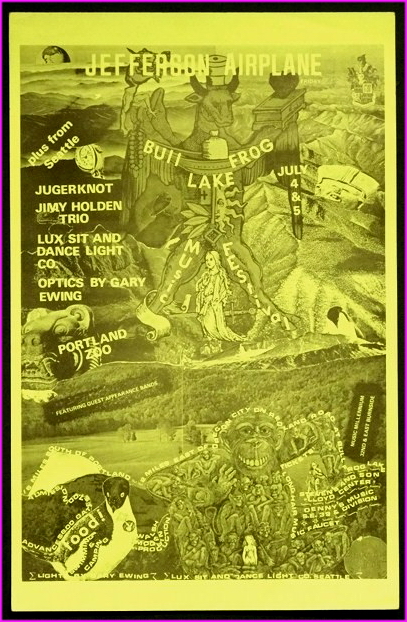 |
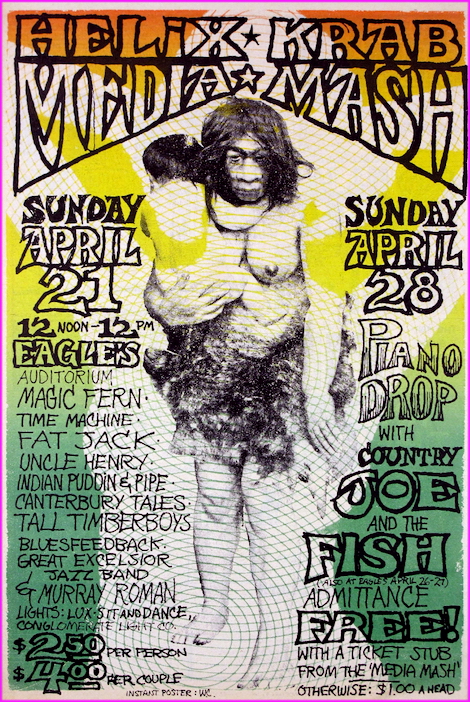 |
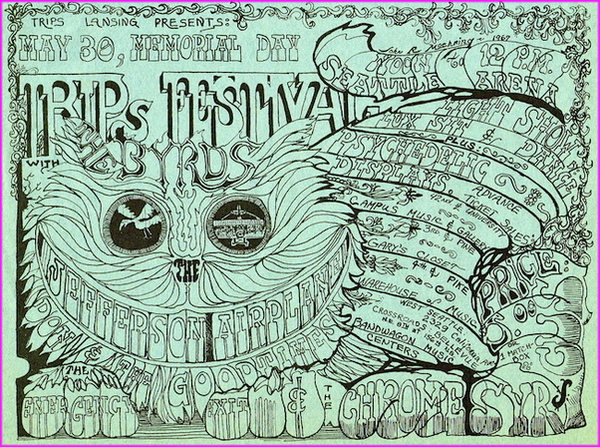 |
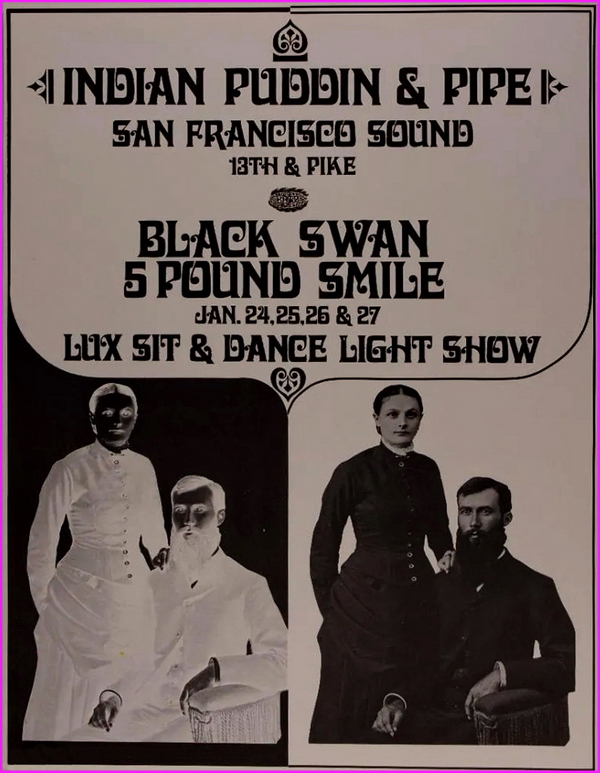 |
January 1968, The San Francisco Sound with Indian Puddin and Pipe, Black Swan, and 5 Pound Smile |
 |
Don Paulson Trips Festival |
Thanks to Glen Beebe for the scan |
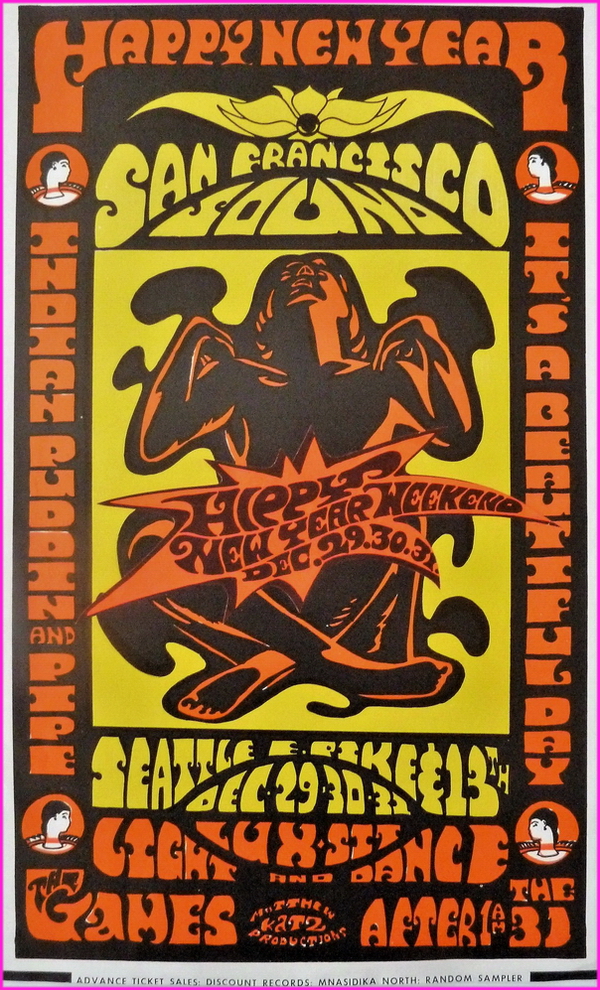 |
Indian Puddin and Pipe, It's a Beautiful Day, December 29th, 30th, 31st, 1967 |
Thanks to Rob Frith at Neptoon Records for Image Use |
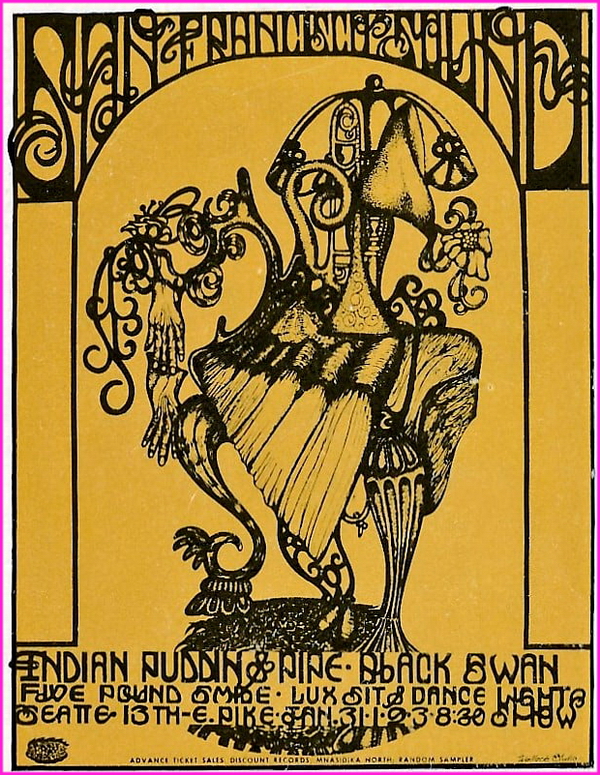 |
Indian Puddin & Pipe, Black Swan, Five Pound Smile, January 31st 1968 |
Thanks to Rob Frith at Neptoon Records for Image Use |
